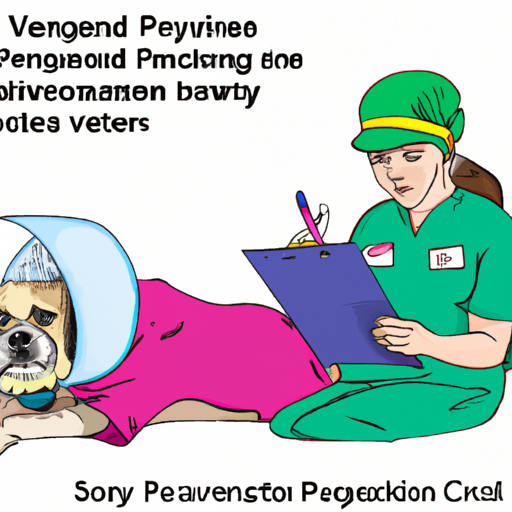Understanding the Spaying Process
Spaying, scientifically known as ovariohysterectomy, is the process of removing a female dog’s reproductive organs. If you’re a dedicated caregiver for your canine companion, it’s essential to understand what this process entails.
- Preparation: Your vet will conduct a physical examination and possibly blood tests to ensure your dog is healthy enough for surgery.
- Anesthesia: Your dog will be put under general anesthesia to ensure she is pain-free during the procedure.
- Surgery: The vet will make an incision in your dog’s abdomen and remove both the ovaries and uterus.
- Recovery: Your dog will stay at the clinic until she’s alert enough to go home.
Remember, it’s important to follow the vet’s aftercare instructions to ensure a smooth recovery.
The Benefits of Spaying Your Female Dog
There are several benefits to spaying your dog, both for her health and your peace of mind.
- Prevention of Health Issues: Spaying helps prevent serious health issues, such as pyometra (a life-threatening uterine infection) and certain types of cancer.
- Behavioral Benefits: It can reduce unwanted behaviors associated with the heat cycle, like marking territory or becoming overly aggressive.
- Overpopulation Control: It contributes to the control of the dog population, thereby reducing the number of dogs in shelters.
| Benefits | Description |
|---|---|
| Health | Prevents serious health issues |
| Behavior | Reduces unwanted behaviors |
| Population Control | Reduces the number of dogs in shelters |
The Best Time to Spay Your Dog
The best time to spay your dog often depends on her breed and size. Generally, vets recommend spaying before the first heat cycle, which can occur as early as six months. However, large breed dogs may benefit from waiting until they’re a bit older. Always consult with your vet to determine the optimal time for your specific dog.
Potential Risks of Spaying
While the benefits of spaying often outweigh the risks, it’s crucial to consider potential complications. These can include:
- Adverse reactions to anesthesia
- Surgical complications, such as bleeding or infection
- Changes in metabolism, leading to potential weight gain
However, these risks are relatively low, especially when the procedure is done by an experienced vet.
Post-Operative Care
After the procedure, your dog will need some special care.
- Limit Physical Activity: Keep your dog calm and restrict her activities for about two weeks.
- Monitor the Incision Site: Check for signs of infection and ensure your dog doesn’t lick or chew the area.
- Follow-Up Vet Visits: Take your dog for regular check-ups to ensure proper healing.
FAQs
Q: Is spaying a painful procedure for my dog?
A: Your dog will be under anesthesia during the procedure, so she won’t feel any pain. Any discomfort post-surgery can be managed with pain medication.
Q: How long does the spaying surgery take?
A: The surgery typically takes about 20 to 90 minutes, depending on your dog’s size and age.
Q: Will my dog’s personality change after being spayed?
A: Most dogs’ personalities do not change after spaying. However, you may notice a decrease in behaviors associated with the heat cycle.
Q: Can a dog be too old to be spayed?
A: Age is not typically a contraindication for spaying. However, older dogs may have other health issues that need to be considered.
Q: How soon after spaying can my dog return to normal activities?
A: It’s best to limit your dog’s physical activities for about two weeks after surgery to allow proper healing.
Remember, you’re not just a pet owner. You’re a caregiver. And understanding the ins and outs of spaying is just one more way you show your four-legged friend how much you care.



